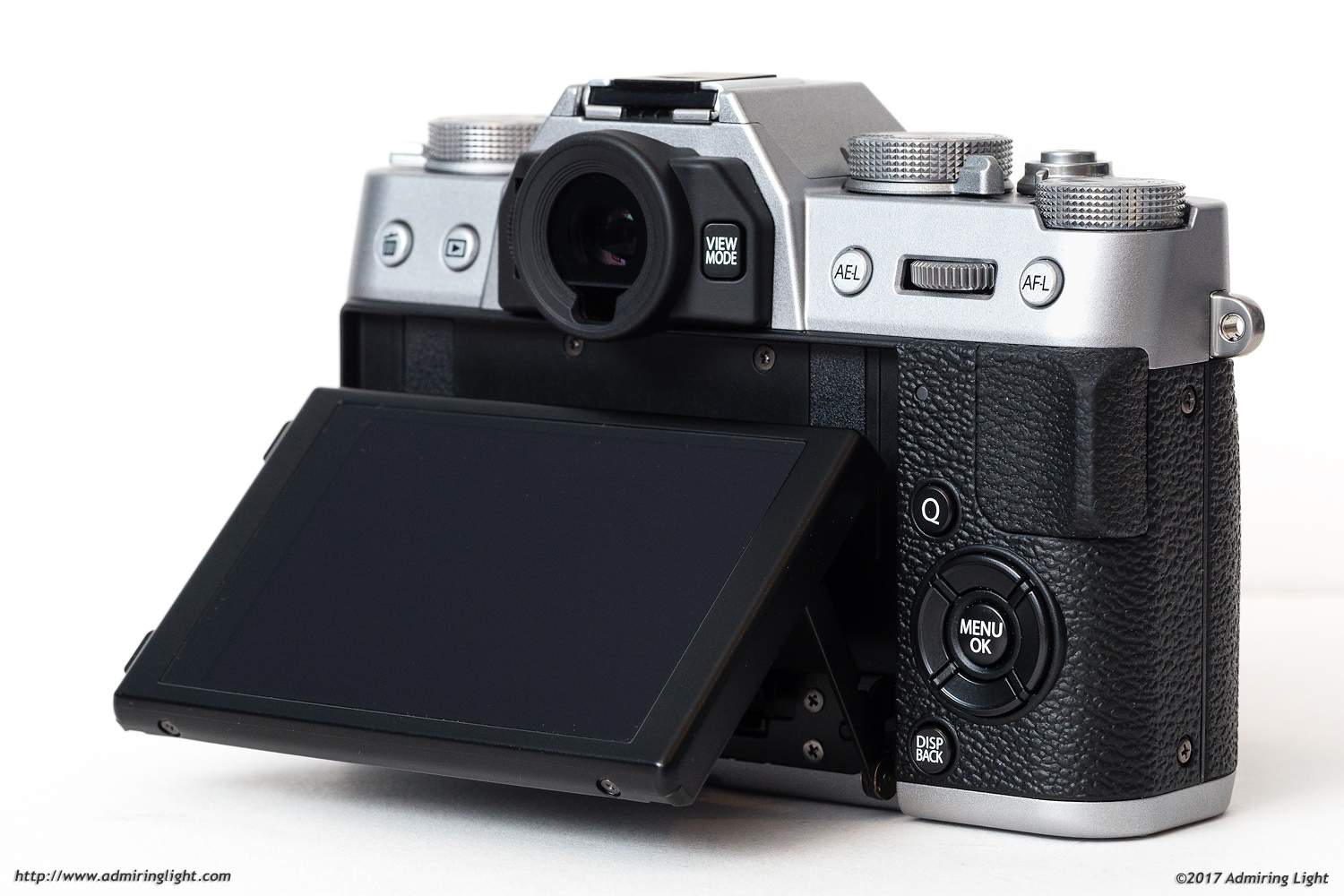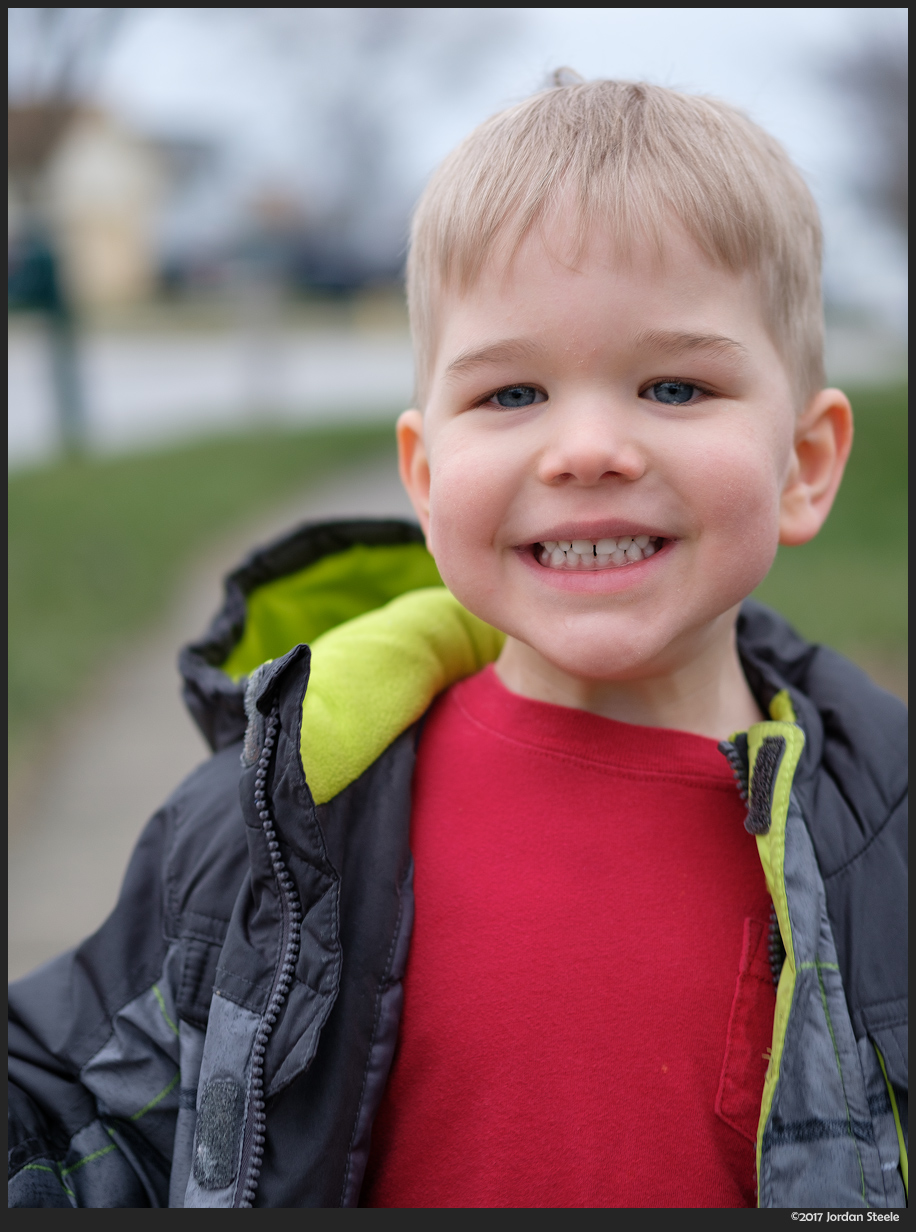While you’ll notice throughout this review that the X-T20 shares quite a lot with the X-T2, one of the major differences between the two cameras is the size of the Electronic Viewfinder (EVF). The X-T20 has a 0.62x magnification viewfinder, which is fairly standard for mid-range mirrorless cameras and prosumer APS-C DSLRs. While the EVF is nice and clear, with crisp optics, good brightness and excellent detail thanks to the 2.32 million dot panel inside, it is notably smaller than the X-T2’s giant 0.77x finder. The EVF is the same apparent size as the X-E2, but for some reason I think it feels larger in actual use, and that may be due to the shorter eye point. Many glasses wearers feel a longer eye point is more comfortable for them, but I’m a glasses wearer, and I actually prefer the shorter eye-point of the X-T20, and I feel it makes for a more immersive experience compared to the X-E2. That said, the finder on the X-T2 is certainly a step up, and is one of the things you are paying for when you opt for the more premium body.

The display in the EVF is essentially identical to that of the X-T2, with a wealth of information that rotates to keep the indicators correctly oriented in the portrait orientation. The X-T20 also has the same wide variety of focus aids available for manual focus, including enlarged focusing, focus peaking and Fuji’s unique split-prism focusing aid, which uses the phase-detect pixels on the sensor to provide a view similar to that of a split prism focus screen on a DSLR, though with four horizontal bands instead of a single split inside a ring.
The rear screen is a 3 inch, 1 million dot capacitive touch screen, and displays excellent viewing angles, good contrast and nice color. The screen can tilt flat for low angle shots or down at around a 50 degree angle for shots above you. Unlike the dual-tilting screen on the X-T2, the X-T20’s rear screen can’t tilt out for shooting low in the vertical orientation. In all, it’s a quality screen that is on par with other recent Fuji cameras.
Autofocus
The 24 megapixel X-Trans III sensor in the X-T20 is the same sensor used in the X-T2 and X-Pro2, and with the same processor and algorithms, has essentially the same autofocus system as well, with a few minor differences. This sensor has an expanded phase-detect area that covers around half of the total sensor area, and provides improvements to autofocus speed and accuracy over a wider portion of the frame compared to the earlier X-Trans II sensor. I found the X-T20 to focus quickly and accurately in single shot mode, in essentially any lighting condition. Slower lenses in dim light would slow down a bit, but overall speed is excellent, especially with the faster focusing primes like the 35mm f/2. The X-T20 shares the same wide focus point arrangement as the X-T2, with the basic mode showing 91 focus points, with an even finer 325 point grid available if you need extreme precision in focus point placement. The focus points provide nearly 100% frame coverage. Like the X-T2, the central 13 columns (or 7 columns if in the reduced focus point arrangement), are phase-detect AF points.

The X-T20 inherits the same improvements to the continuous autofocus system that first debuted in the X-T2, with much improved algorithms for subject tracking.There are 5 different continuous AF custom setting presets that alter the logic used for continuous focusing. The basic mode is similar to the existing logic used for tracking on earlier bodies, but the other modes offer advantages in a variety of other situations. The other modes include one for ignoring obstacles that come between you and your subject, one for accelerating or decelerating subjects, one for suddenly appearing subjects, and one for erratically moving subjects. One of the two differences between the X-T20 and the X-T2 is that the X-T20 lacks the custom setting option that is present on the X-T2, so you’ll have to use one of the preset modes on this newer body. Accuracy of the continuous AF is consistent with the X-T2 and a nice step up from previous generation Fuji X-Series cameras. The shot above was taken at the end of a 2 second burst with my son running at me, in which the vast majority of the frames were in perfect focus, including this one, even at a very close focus distance.
Fuji made improvements to the face detection algorithms in this latest generation of Fuji cameras, and that development continues in the X-T20. The face detection system can detect whole faces as well as eyes, with settings for a preference towards a left or right eye, or letting the camera choose the nearest eye. In a change from the X-T2, the X-T20 is the first Fuji camera to allow for continuous AF with phase detection, while face detection is enabled. Now you can leave face detection on and get accurate continuous autofocus at the same time: a great tool for use when shooting pictures of your kids playing, among other uses. However, I found that accuracy took a small hit if the subject is rapidly changing position while face detection was enabled, and that using zone focusing along yielded a higher percentage of in-focus shots.
Performance
The X-T20 has the same X-Processor Pro as the X-T2 and X-Pro2, and this quick processor allows for fast file processing and excellent responsiveness. You won’t be waiting on this camera. The X-T20 also has the same continuous burst rates as the X-T2, with 14fps and 11fps rates available in electronic shutter mode (and fixed focus), and 8fps frame rates available with focus tracking. In my experience with the camera, focus tracking works with both the mechanical and electronic shutter at the 8fps frame rate.
One of the biggest limitations with the older X-T10 was the extremely limited buffer, which filled after only 7 RAW shots or 8 JPEG shots: less than one full second of shooting at continuous high burst rate. Thankfully, Fuji has removed this handicap from the X-T20. I was able to capture 25 RAW shots or 65 JPEG shots in a single 8 fps burst before the camera began to slow down. This is better than the X-T1, and only a bit short of what the X-T2 can accomplish.
In all, I am very pleased with the performance of the X-T20.






Leave a Reply